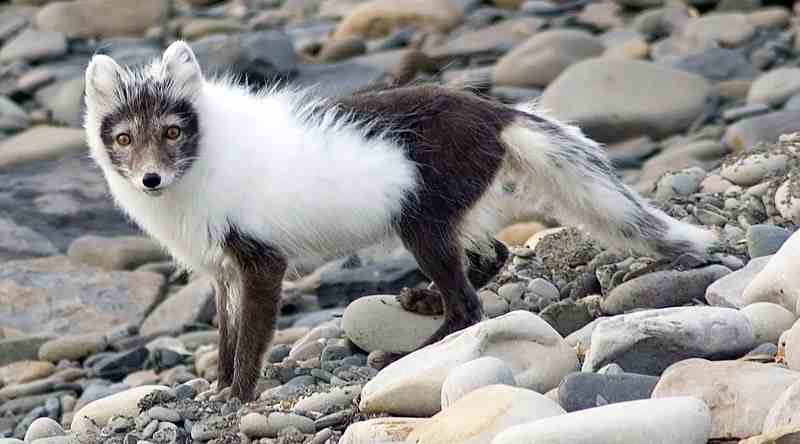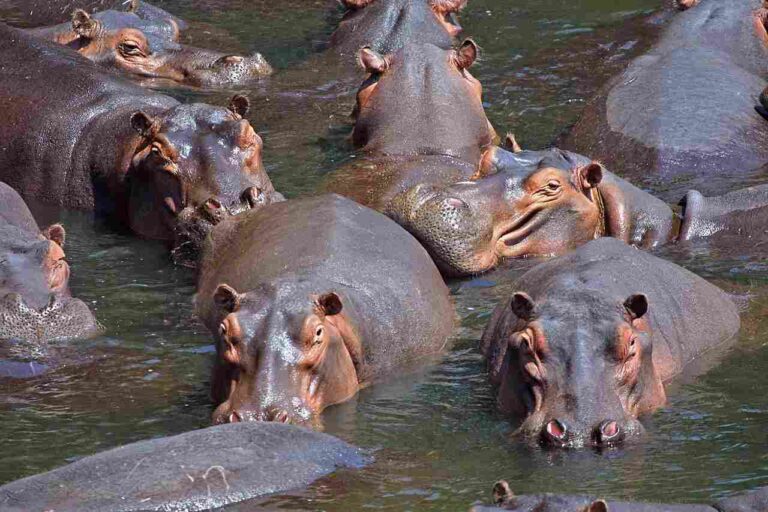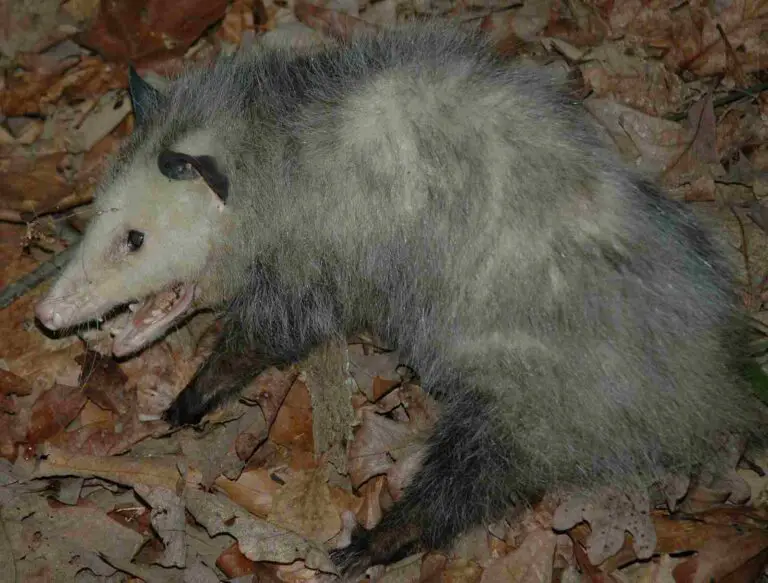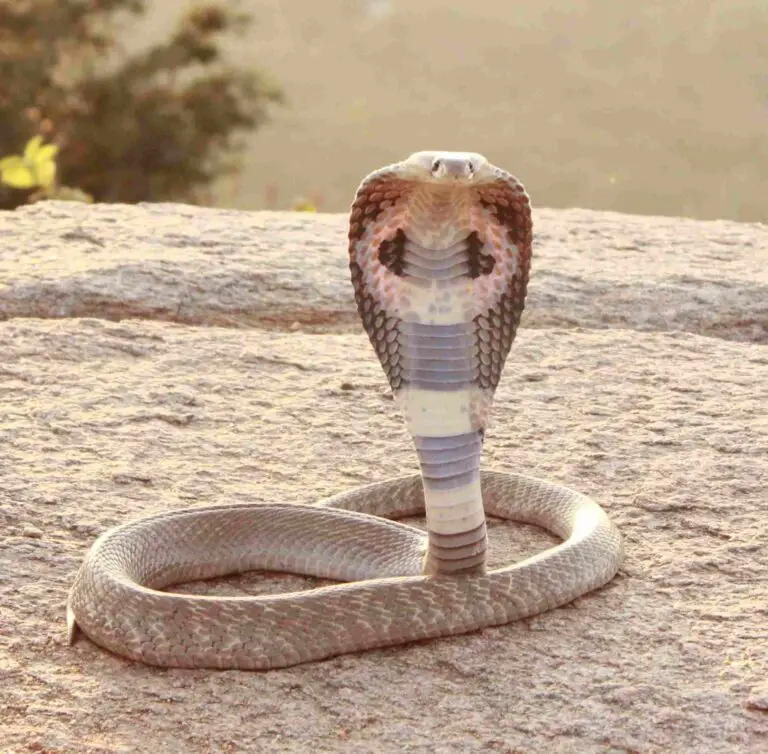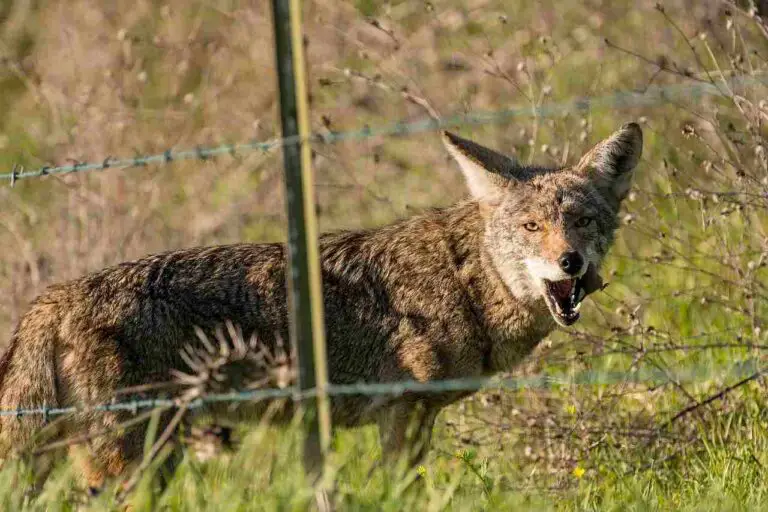23 Facts About the Tundra Biome Discussed
Facts about the tundra include climatic, geographic, biological, edaphic, evolutionary, geomorphological, and onomastic phenomena, that are typical to, and can be used in the description of; tundras around the world.
This article discusses some facts about the tundra biome/ecosystem, as follows;
1). Tundras have Relatively-Low Biodiversity (as one of the Facts About the Tundra)
Low biodiversity is a core characteristic of the tundra, especially when compared to more-robust ecosystems like tropical rainforests [10].
Factors that contribute to this include;
1. Short growing season
2. Extremely-cold tundra climate
3. Low resource-availability
As a result of the factors listed above, tundras have low relative species-richness.
Plants and animals in the tundra are only those that have been able to develop highly-specialized adaptations in the course of their evolution.

2). Cold Climatic Conditions are Typical in Tundras
Tundras are typically cold, to the extent of being one of the Earth's coldest terrestrial biomes.
Average temperature in the tundra is less than 10°C (it could be as low as -2°C [7]), with most times of the year experiencing consistent subzero conditions.
3). Permafrost Occurs Beneath the Topsoil Layer in Many Tundra Regions (as one of the Facts About the Tundra)
As the name implies, permafrost refers to permanently-frosted or frozen soil and rock material, that typically occurs beneath the topmost soil layer in polar regions [9].
Permafrost in the tundra is not uncommon, and it contributes to poor drainage, which is another characteristic of tundra soil.
Plants in the tundra also are adapted to the occurrence of permafrost, as their roots are often shallow in order to reach water and nutrients in the penetrable topsoil layer.
4). The Tundra Landscape is Basically Treeless
Treeless-ness is a fundamental characteristic of the tundra, and, along with low relative humidity; makes it similar to desert ecosystems.
Factors to which the treeless nature of the tundra can be attributed, include;
1. Harsh climatic conditions
2. Occurrence of permafrost
3. Shallow, infertile soil
4. Short annual growing season
In the place of trees (which are dominant in other biomes like forests), tundras support the growth of smaller vascular and non-vascular plants like shrubs, sedges, grasses, and mosses.
5). Extensive Daylight Hours are Typical of Tundra Summer Season (as one of the Facts About the Tundra)
It is typical for extensive hours of daylight to occur in the tundra, during summer season [2].
The reason behind this is a combination of latitudinal position and solar orbital movement; where summer occurs as the solar trajectory coincides with the high-latitude position of the tundra biome.
Daylight during the summer in tundras can last for as long as several weeks; and enables plants to produce enough biomass (through photosynthesis) for use during the winter.
6). Extensive Periods of Darkness are Typical of Tundra Winter Season
Winter sunlight-supply is a stark contrast to the summer conditions in the tundra.
Darkness typically lasts for extensive periods of time during winter, as the solar position in its orbital path is far removed from the tundra horizon.
This period of darkness makes photosynthesis difficult, so that plants and animals must resort for energy-conserving adaptations for survival; like hibernation and leaf-senescence.

7). Growing/Breeding Seasons are Short in the Tundra (as one of the Facts About the Tundra)
The breeding season in tundras is very short compared to other ecosystems.
This is mainly because of the persistence of cold climatic conditions, that lead to a very prolonged winter.
The short breeding season accounts for limitations of biodiversity in the tundra, and is behind several adaptive features of tundra organisms.
Reproduction, photosynthesis and growth all occur rapidly for organisms that breed in the tundra, leading to relatively-short lifecycles.
8). Tundras are Generally Dry with Low Relative Precipitation
The amount of precipitation received by tundras is relatively low, hardly exceeding 274 mm per annum for both rainfall and snowfall combined [6].
This can be attributed to cold temperatures that limit the rate of evaporation and atmospheric humidity, both of which contribute to cloud formation.
Also, snowfall is the more common form of precipitation in tundras (than rainfall), also due to the cold conditions.
9). Highly-Specialized Adaptations Occur in Tundra Organisms (as one of the Facts About the Tundra)
Organisms in the tundra are highly-specialized in their adaptations, which are tailored to serve in their survival while navigating the terrain and searching for food.
As a result of multiple generations of biological evolution, tundra organisms have features like compact morphology, fur, blubber (fat layer), camouflage, shallow root system, and thick plumage for thermal insulation.
They also have specialized behavioral adaptations like;
1. Communal hunting or grazing
2. Vocalization
3. Hibernation
4. Migration

10). The Tundra is an Efficient Carbon Sink with High Sequestration Rate
The efficiency of the global carbon cycle depends on tundra regions.
In spite of the low amount of total dry biomass produced by organisms in the tundra, this ecosystem functions as an effective carbon sink.
Because temperatures are generally low, tundras have slow rates of biodegradation, which allows organic matter to accumulate in soil, and encourages intensive carbon sequestration [8].
In recent years, the carbon-storing function of tundras has been threatened by global warming, which causes permafrost to thaw and release carbonaceous greenhouse gases like methane and carbon dioxide, into the atmosphere.
11). High-Speed Winds are Typical of the Tundra (as one of the Facts About the Tundra)
In tundra regions, high-speed winds are fairly common.
These winds are intense due to factors like convective atmospheric dynamics, flat topography, and absence of trees to obstruct moving air-masses.
High-speed winds in the tundra can reach and exceed 46 km/h [1], and contribute to landform modification, cold, low humidity, organic adaptation, and general harshness of the terrain.
12). Most Tundras Occur in the Northern Hemisphere
Majority of tundra zones on Earth can be found within the Northern Hemispherical region, in high-latitude areas.
Places that serve as tundra locations include; northern Canada, Alaska in the United States, Russia, Greenland, Scandinavia and the Asian portion of Eurasia.
13). Arctic and Alpine are the two Main Types of Tundras (as one of the Facts About the Tundra)
The two main types of tundra ecosystems are;
1. Arctic tundra
2. Alpine tundra
Arctic tundra occurs in the far northern latitudinal zone, within geographic reach of the Arctic Circle.
Alpine tundra can be found in mountainous ranges around the world where conditions are cold and dry; including the Alps, Himalayas, Atlas and Andes [5].
The Arctic tundra is more geographically restricted, and prominent in terms of the typicality of its characteristics, and the degree of its overall global relevance. However, all tundras share several basic (biotic and abiotic) attributes.
14). Some Parts of the Antarctic can be Classified as Tundra
As implied in other sections of this article, the tundra is mostly confined to the Arctic, and mountainous zones.
While it is not widely acknowledged, some parts of Antarctica also qualify as tundra based on basic characteristics.
Such areas have similar plant and animal life, as well as environmental conditions, to tundras in typically-recognized locations.
Antarctic tundra zones are however much-less extensive than Arctic zones.
15). The Term "Tundra" Comes from Finnish Language (as one of the Facts About the Tundra)
Tundra is derived from tunturi; which is a Finnish word for a treeless or barren landscape.
It is believed to have been used by early European explorers and was subsequently modified and adopted as a name for the biome.
Tundra's Finnish origin also indicates the distinctive representation of the tundra biome in Europe.
16). Many Tundra Animals have Seasonally-Variable Camouflage
The seasonal variability of tundra climate has led to physiological adaptation whereby several organisms are able to change the color of their fur or plumage seasonally to provide effective camouflage all year-round.
By blending into the surrounding, tundra animals increase their chances of survival through the eluding of predators and stalking of prey.
Some instances of seasonally-variable camouflage in tundra animals are;
1. Moulting of Arctic fox coat between lighter and darker shades [3]
2. Feather color-changes of ptarmigans in summer and winter
3. Arctic hare seasonal color changes

17). Migratory Behavior is a Common Adaptation of Tundra Organisms (as one of the Facts About the Tundra)
Migratory behavior is common among organisms in the tundra, as part of their adaptation for survival.
Organisms that are known for their migration between the tundra and other biomes include many species of birds, as well as herbivores.
Migration enables organisms to benefit from the increase in food resource-availability during summer, and to elude the resource depletion and environmental harshness of winter.
18). Tundras often Share an Ecotone with the Boreal Forest
It is not uncommon to find the tundra sharing a transitional zone, also called an ecotone, with boreal forests.
Such ecotones mark the onset of transition from extreme harsh conditions to relatively-moderate ones; and is evident in the gradual change from treeless landscapes to coniferous forested land.
The ecotone between tundra and taiga ecosystems is very vital to the survival of organisms in each of these zones, which rely on influx of resources, and inter-biome seasonal migration.
19). Climate Change and Global Warming Effects are Prominent in the Tundra (as one of the Facts About the Tundra)
Tundras are susceptible to the environmental impacts of global warming and climate change.
Several studies have revealed that tundra climatic conditions are progressively losing their typical characteristics [4], as human activities like urbanization, mining, refining and electricity generation, all lead to warming of the terrain.
Permafrost-thaw is also well documented in the tundra and its adjacent polar zones.
These effects are felt by tundra organisms, and often run contrary to behaviors and morphological features derived from generations of evolution.
20). Tundra Covers a Large Portion/Percentage of the Earth's Total Land Area
At least 8 to 10 percent of the Earth's land area is occupied by tundra biome, with some analyses raising this value to 20 percent.
Tundra extends across mountainous zones in all continents, as well as across most of the Northern Hemisphere.
Its extensive areal span implies that the tundra is an important factor among terrestrial ecosystems on Earth.
21). Some Insects Survive and Thrive in Tundras (as one of the Facts About the Tundra)
In spite of the harsh environmental conditions, insects are still known to survive in the tundra.
The Antarctic midge, as well as some caterpillars and beetles, can tolerate the frigid tundra climate using various bio-mechanisms and adaptations.
Many of these insects breed in the summer, having short lifecycles to fit the unique seasonality of the tundra.

22). Amphibians and Reptiles are Not Represented in the Tundra Biome
Generally, amphibians and reptiles are absent in the tundra ecosystem.
In fact, these two groups are the only major animal categories that are not represented in tundras, even as migrants.
The reason for their absence is the ectothermic nature of most amphibians and reptiles, which makes them incapable of self-regulating their body temperature to tolerate the cold.
Treeless-ness in the tundra and low humidity also make it difficult for suitable micro-habitats to occur, for these organic groups.
23). Omnivorous Feeding is Practiced by Several Tundra Organisms to Supplement their Primary Diet (as one of the Facts About the Tundra)
Many tundra animals have evolved to survive by utilizing a broad dietary range which includes both plant and animal matter as food sources.
The outcome of such evolution is omnivorous feeding, which is evident in consumers like bears; some birds, and Arctic foxes.
Omnivorous feeding reduces the severity of prey scarcity and general food-shortage, for these organisms.
Conclusion
Facts about the tundra biome are;
1. Tundras have Relatively-Low Biodiversity
2. Cold Climatic Conditions are Typical in Tundras
3. Permafrost Occurs Beneath the Topsoil Layer in Many Tundra Regions
4. The Tundra Landscape is Basically Treeless
5. Extensive Daylight Hours are Typical of Tundra Summer Season
6. Extensive Periods of Darkness are Typical of Tundra Winter Season
7. Growing/Breeding Seasons are Short in the Tundra
8. Tundras are Generally Dry with Low Relative Precipitation
9. Highly-Specialized Adaptations Occur in Tundra Organisms
10. The Tundra is an Efficient Carbon Sink with High Sequestration Rate
11. High-Speed Winds are Typical of the Tundra
12. Most Tundras Occur in the Northern Hemisphere
13. Arctic and Alpine are the two Main Types of Tundras
14. Some Parts of the Antarctic can be Classified as Tundra
15. The Term "Tundra" Comes from Finnish Language
16. Many Tundra Animals have Seasonally-Variable Camouflage
17. Migratory Behavior is a Common Adaptation of Tundra Organisms
18. Tundras often Share an Ecotone with the Boreal Forest
19. Climate Change and Global Warming Effects are Prominent in the Tundra
20. Tundra Covers a Large Portion/Percentage of the Earth's Total Land Area
21. Some Insects Survive and Thrive in Tundras
22. Amphibians and Reptiles are Not Represented in the Tundra Biome
23. Omnivorous Feeding is Practiced by Sever Tundra Organisms to Supplement their Primary Diet
References
1). A'Campo, W.; Bartsch, A.; Roth, A.; Wendleder, A.; Martin, V. S.; Durstewitz, L.; Lodi, R.; Wagner, J.; Hugelius, G. (2021). "Arctic Tundra Land Cover Classification on the Beaufort Coast Using the Kennaugh Element Framework on Dual-Polarimetric TerraSAR-X Imagery." Remote Sensing 13(4780). Available at: https://doi.org/10.3390/rs13234780. (Accessed 17 June 2023).
2). Ashley, N. T.; Schwabl, I.; Goymann, W.; Buck, C. L. (2013). "Keeping time under the midnight sun: behavioral and plasma melatonin profiles of free-living Lapland longspurs (Calcarius lapponicus) during the arctic summer". J Exp Zool A Ecol Genet Physiol. 2013 Jan;319(1):10-22. Available at: https://doi.org/10.1002/jez.1768. (Accessed 17 June 2023).
3). Buhler, K.; Samelius, G.; Alisauskas, R. T.; Jenkins, E. (2021). "Fur loss syndrome and lice infestations observed on Arctic foxes in central Nunavut, Canada." Available at: https://doi.org/10.1139/as-2021-0005. (Accessed 17 June 2023).
4). Callaghan, T. V.; Velichko, A.; Borisova, O. (2011). "TUNDRA IN A CHANGING CLIMATE." Available at: https://doi.org/10.15356/2071-9388_03v04_2011_01. (Accessed 17 June 2023)..
5). Dutta, P. K.; Dutta, B. K.; Das, A. K.; Sundriyal, R. C. (2014). "Alpine Timberline Research Gap in Himalaya: A Literature Review." Indian Forester 140(4):419-427. Available at: https://www.indianforester.co.in/index.php/indianforester/article/view/48025. (Accessed 17 June 2023).
6). Liljedahl, A. K.; Hinzman, L. D.; Kane, D. L.; Oechel, W. C.; Tweedie, C. E.; Zona, D. (2017). "Tundra water budget and implications of precipitation underestimation." Water Resour Res. 2017 Aug;53(8):6472-6486. Available at: https://doi.org/10.1002/2016WR020001. (Accessed 17 June 2023).
7). Seco, R.; Holst, T.; Davie-Martin, C. L.; Simin, T.; Guenther, A.; Pirk, N.; Rinne, J.; Rinnan, R. (2022). "Strong isoprene emission response to temperature in tundra vegetation." Proc Natl Acad Sci U S A. 2022 Sep 20;119(38):e2118014119. Available at: https://doi.org/10.1073/pnas.2118014119. (Accessed 17 June 2023).
8). Shaver, G. R.; Giblin, A. E.; Nadelhoffer, K. J.; Thieler, K. K.; Downs, M.; Laundre, J.; Rastetter, E. B. (2006). "Carbon turnover in Alaskan tundra soils: Effects of organic matter quality, temperature, moisture and fertilizer." Journal of Ecology 94(4). Available at: https://doi.org/10.1111/j.1365-2745.2006.01139.x. (Accessed 17 June 2023).
9). Shur, Y. L.; Jorgenson, M. T.; Kanevskiy, M. (2011). "Permafrost." Encyclopedia of Snow, Ice and Glaciers (pp.841-848). Available at: https://doi.org/10.1007/978-90-481-2642-2_400. (Accessed 17 June 2023).
10). Walker, M.; Gould, W. A.; Ill, F. S. C. (2011). "Scenarios of Biodiversity Changes in Arctic and Alpine Tundra." Global Biodiversity in a Changing Environment (pp.83-100). Available at: https://doi.org/10.1007/978-1-4613-0157-8_5. (Accessed 17 June 2023).
